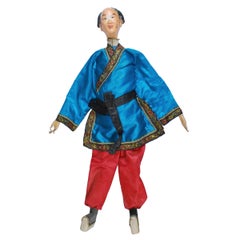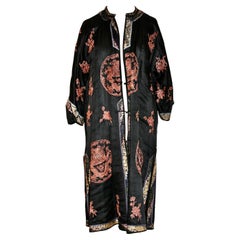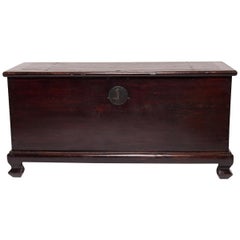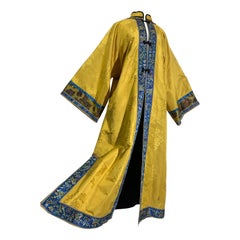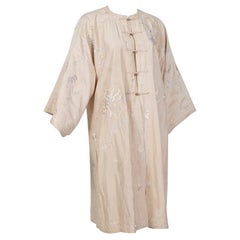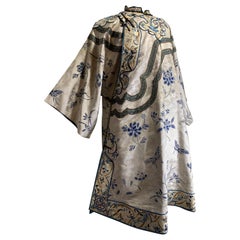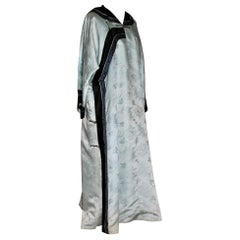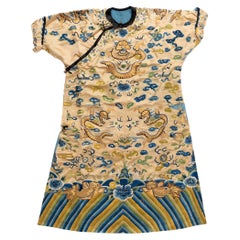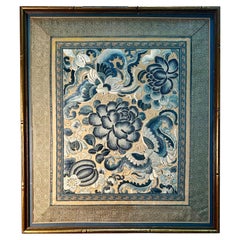Antique Chinese Robe
Early 20th Century Chinese Qing Antique Chinese Robe
Silk, Wood
Early 20th Century Chinese Antique Chinese Robe
Mid-19th Century Chinese Qing Antique Chinese Robe
Brass
1920s Chinese Antique Chinese Robe
Early 1900s Chinese Antique Chinese Robe
1920s Chinese Antique Chinese Robe
1920s Chinese Antique Chinese Robe
Mid-19th Century Chinese Qing Antique Chinese Robe
Silk
Mid-18th Century Chinese Antique Chinese Robe
Textile
1880s Qing Antique Chinese Robe
Felt, Silk
19th Century Chinese Chinese Export Antique Chinese Robe
Silk, Giltwood
Mid-19th Century Chinese Antique Chinese Robe
Elm
15th Century and Earlier Chinese Tang Antique Chinese Robe
Ceramic
Late 19th Century Chinese Qing Antique Chinese Robe
Wood
19th Century Chinese Antique Chinese Robe
Silk
Late 19th Century Chinese Qing Antique Chinese Robe
Metallic Thread
19th Century Chinese Chinese Export Antique Chinese Robe
Silk, Giltwood
19th Century Chinese Chinese Export Antique Chinese Robe
Silk, Giltwood
Early 20th Century Chinese Qing Antique Chinese Robe
Textile, Wood, Paint
17th Century Chinese Qing Antique Chinese Robe
Jade
19th Century Unknown Antique Chinese Robe
Porcelain
15th Century and Earlier Chinese Tang Antique Chinese Robe
Terracotta
19th Century Japanese Edo Antique Chinese Robe
Textile, Brocade, Silk
Late 19th Century Chinese Chinese Export Antique Chinese Robe
Pottery
Late 19th Century Chinese Qing Antique Chinese Robe
Silk
Mid-19th Century Chinese Qing Antique Chinese Robe
Iron
1920s Chinese Antique Chinese Robe
Early 20th Century Chinese Qing Antique Chinese Robe
Coral
18th Century Chinese Antique Chinese Robe
Silk
19th Century Chinese Victorian Antique Chinese Robe
Silk
18th Century Chinese Qing Antique Chinese Robe
Giltwood, Lacquer
Early 20th Century Chinese Qing Antique Chinese Robe
Fabric, Plexiglass
1820s French Antique Chinese Robe
Ormolu
1920s American Art Deco Antique Chinese Robe
Gouache
19th Century Asian Antique Chinese Robe
19th Century English Antique Chinese Robe
Coade Stone
1880s Chinese Chinoiserie Antique Chinese Robe
Wood
19th Century Other Art Style Antique Chinese Robe
Wood
19th Century Chinese Antique Chinese Robe
Early 20th Century Chinese Chinoiserie Antique Chinese Robe
Brass
19th Century Chinese Antique Chinese Robe
Silk
Early 20th Century Antique Chinese Robe
Pine
19th Century Chinese Antique Chinese Robe
19th Century Chinese Antique Chinese Robe
Elm, Lacquer
1920s Chinese Art Deco Antique Chinese Robe
Wool
Early 20th Century Chinese Art Deco Antique Chinese Robe
19th Century Chinese Antique Chinese Robe
1850s Qing Antique Chinese Robe
Silk
Late 18th Century Chinese Chinese Export Antique Chinese Robe
Paper, Lacquer
19th Century English Antique Chinese Robe
Coade Stone
Early 20th Century Chinese Antique Chinese Robe
19th Century Chinese Antique Chinese Robe
Early 20th Century Chinese Art Deco Antique Chinese Robe
19th Century Chinese Antique Chinese Robe
19th Century Chinese Antique Chinese Robe
19th Century Chinese Antique Chinese Robe
Silk
19th Century Chinese Antique Chinese Robe
Elm
19th Century Chinese Antique Chinese Robe
18th Century and Earlier Chinese Antique Chinese Robe
Silk
19th Century Chinese Antique Chinese Robe
- 1
Antique Chinese Robe For Sale on 1stDibs
How Much is a Antique Chinese Robe?
- What is a Chinese robe called?1 Answer1stDibs ExpertNovember 2, 2021A Chinese robe is called a qipao or the cheongsam. They are adorned with elaborate and intricate patterns, sometimes of historical significance. Shop a collection of vintage and designer Chinese robes from some of the world’s top boutiques on 1stDibs.
 PAGODA REDOctober 7, 2020
PAGODA REDOctober 7, 2020To determine the age of a Chinese furniture piece, look carefully at the joinery and finish. Natural expansion and contraction of the wood over time will cause a joint to protrude or retract, distorting a once-seamless fit. Antique lacquer finishes become crackled and worn over time. Areas of exposed wood, such as the underside of a table, the footrest of a chair, or the back of a cabinet should appear raw and dry compared to the finished surface. With use, the legs of tables and chairs become weathered near the bottom from precipitation and use.
 Lotus GallerySeptember 23, 2020
Lotus GallerySeptember 23, 2020The best way to know is to take it to an expert, such as an appraiser, reputable dealer or auction house, or museum
- 1stDibs ExpertNovember 4, 2024To identify antique Chinese furniture, look carefully at its details. Chinese craftsmen often built furniture using mortise and tenon joinery, eliminating the need for nails and screws. If you see this type of hardware, your piece is likely not at least 100 years old, especially if the hardware still looks new and shiny. Since antique furniture was handmade, you will normally see slight imperfections, such as tool marks or slight variations in carvings. Pieces that appear completely uniform and pristine are less often genuine antiques.
When present, maker's marks can also be helpful. Research the marks to learn more about when the maker was active and producing pieces like yours. Alternatively, you can have a certified appraiser or experienced antique dealer evaluate your furniture for you.
Shop an assortment of antique Chinese furniture.
